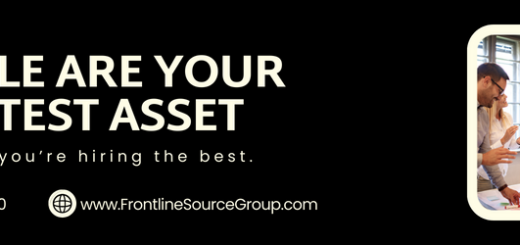New Stability Amid Change: Keeping Leadership Intact During Major Transitions
It is impossible to overestimate the importance of stability in leadership in the dynamic world of organizations. I’ve learned that being an effective leader is about giving people I lead a sense of security and direction, not just about making decisions or establishing a vision. An atmosphere of stability allows team members to innovate, take chances, and voice their opinions without worrying about sudden changes or unpredictability. We are currently hiring for various positions in our company.
Key Takeaways
- Stability in leadership is crucial for organizational success and employee morale
- Strategies for maintaining stability during major transitions include clear communication and consistent decision-making
- Building trust and confidence in leadership involves transparency, accountability, and leading by example
- Effective communication during times of change requires empathy, active listening, and regular updates
- Empowering and supporting leadership teams through training, mentorship, and resources is essential for long-term success
I lay the groundwork for my team to develop trust & dedication when I am stable, which eventually results in improved output and performance. Also, in times of turbulence, leadership stability acts as a beacon. I’ve seen firsthand how lack of direction or inconsistent leadership can cause organizations to fail. On the other hand, my team is reassured that we can overcome any obstacle when I keep a steady hand. This feeling of stability not only aids in keeping talent on board, but it also draws in new employees looking for a trustworthy and encouraging work environment.
In summary, having stable leadership is not only a desirable quality but also essential to creating a positive corporate culture. Techniques for Preserving Stability During Significant Change Another of the most difficult parts of leadership is managing significant changes. I now know that adhering to particular tactics can support stability in these circumstances. My top priority is to communicate clearly.
I can help my team members feel less anxious & uncertain by clearly communicating the rationale for the changeover & the anticipated results. Open communication fosters trust and reaffirms the notion that we are all on the same page. Transparency is essential.
My team’s involvement in the transition process is another tactic I use. I empower them and give them a sense of ownership over the changes occurring by asking for their opinions & promoting teamwork. Everyone finds it easier to adjust when a shared commitment to the change is fostered by this participatory approach. I also make certain that I am accessible for assistance and direction at every stage of the procedure. Being approachable and present allows me to address issues as they come up, which helps to reinforce the stability my team needs when things change. Establishing Trust & Confidence in Leadership Effective leadership is based on trust, which I have discovered takes genuineness and constant work to develop.
Being open & honest about how I make decisions is one of the best ways I can build trust. My team can better comprehend my viewpoint and feel included when I explain the reasoning behind my decisions. In addition to fostering trust, this openness promotes candid communication where team members are at ease sharing their thoughts and worries. Also, I am aware that consistent behavior over time fosters trust. I try to be dependable & keep my word.
When I promise to do something, I make it a top priority to follow through. This dependability boosts my leadership credibility and gives my team confidence. Also, I show my team members that I value their opinions by actively seeking out their feedback. I further strengthen our relationship by demonstrating my commitment to their development and success by appreciating their opinions and making changes in response to them.
Effective Communication During Change Effective communication is crucial during times of change, & I’ve discovered that my team’s reaction can be greatly influenced by the messages I convey. Making my communication style appropriate for the audience is one strategy that I find to be very helpful. I try to modify my strategy to accommodate the different information-receiving preferences of my team members. Through team briefings, written updates, or one-on-one meetings, I want to make sure that everyone is informed and involved. Also, I stress the value of paying attention during these discussions. I always make it a point to listen intently and validate team members’ feelings when they voice concerns or inquiries.
This not only shows that I appreciate their opinions, but it also helps me comprehend their points of view. By encouraging an open discussion, I establish a space where information can freely flow, enabling us to manage change more skillfully as a team. Supporting and Empowering Leadership Teams Ensuring stability within the organization requires me to support and empower my leadership team.
I’ve discovered that delegation is more than just giving people assignments; it’s also about giving my team responsibilities that let them advance their careers. In addition to relieving my own workload, I help my leaders develop a sense of ownership by giving them the freedom to decide within their areas of expertise. Along with delegating, I place a high priority on giving my leadership team resources and support.
This entails providing mentorship, training opportunities, & access to resources that can increase their efficacy. It is more probable that my leaders will lead with assurance & stability when they feel encouraged in their positions. In addition, I cultivate a culture of cooperation among my leadership team members so they can exchange ideas and best practices. This spirit of cooperation not only makes our leadership stronger as a group, but it also supports the stability we want to attain throughout the company. Handling Opposition and Difficulties Opposition to change is a normal human reaction, and in my experience as a leader, several types of pushback have occurred during changes.
Recognizing resistance honestly is one of the best tactics I’ve discovered for dealing with it. I take the time to listen and validate team members’ feelings when they voice reservations or concerns. By confronting their anxieties directly, I open the door to a conversation that may result in comprehension and a solution. I also make an effort to pinpoint the underlying reasons for resistance.
Usually, it results from a lack of knowledge or comprehension of the changes being made. I can allay concerns and foster support among my team members by giving them context & clarity regarding the reasons for change. Including important stakeholders in the decision-making process can also lessen resistance because people are more likely to welcome change than to oppose it when they feel engaged in determining the organization’s future course.
Promoting Resilience & Adaptability in Leadership In the fast-paced world of today, resilience & adaptability are critical traits for successful leadership. I’ve discovered that cultivating these qualities in both my team and myself calls for initiative. My team members’ growth mindset is one way I help them develop adaptability. By presenting obstacles as chances for growth and learning, I encourage them to welcome change instead of being afraid of it. Also, experience and support help to develop resilience.
I stress that it’s critical to keep a positive attitude and concentrate on finding solutions rather than moping about issues when things get tough. By exhibiting resilience myself and showing my team how to overcome obstacles, I inspire them to have similar mindsets. Also, establishing a safe space for team members to talk about their difficulties builds a sense of unity that increases our resilience as a group. The Function of Succession Planning & Continuity Leadership continuity is essential to an organization’s long-term stability. As a leader, I understand how crucial succession planning is to anticipating changes and causing the least amount of disturbance possible.
I can give them opportunities for growth and mentoring that prepare them for future positions by seeing potential leaders in my organization early on. Establishing a culture of knowledge sharing within the company is another aspect of succession planning. It promotes continuity in leadership styles & values when leaders are open to sharing their knowledge and experiences with up-and-coming talent. By guaranteeing that organizational goals and expectations are understood, this knowledge transfer not only equips future leaders but also strengthens stability during transitions.
In conclusion, developing trust, successfully managing change, empowering teams, and maintaining continuity within organizations all depend on stable leadership. I can foster an atmosphere where team members and leaders flourish in the face of adversity by putting strategies into place that place a high priority on communication, support, flexibility, and succession planning. In the end, these initiatives will enable us to create robust organizations that can successfully negotiate the intricacies of the ever-changing modern environment.
In a related article titled Following Directions to Your Next Job: Bill Kasko, Frontline Source Group Inc., the importance of leadership and direction in navigating major transitions is highlighted. Just as Stability Amid Change emphasizes the need for strong leadership during times of upheaval, this article underscores the role of guidance and direction in finding success in one’s career path. Both articles stress the significance of staying grounded and focused amidst change, whether it be in a professional or organizational context.
FAQs
What are some common major transitions that organizations face?
Some common major transitions that organizations face include mergers and acquisitions, leadership changes, restructuring, and rapid growth or decline.
Why is it important to keep leadership intact during major transitions?
Keeping leadership intact during major transitions helps to maintain stability, continuity, and a sense of direction within the organization. It also provides a sense of security for employees and stakeholders.
What are some strategies for keeping leadership intact during major transitions?
Strategies for keeping leadership intact during major transitions include effective communication, providing support and resources for leaders, succession planning, and fostering a culture of adaptability and resilience.
How can organizations support leaders during major transitions?
Organizations can support leaders during major transitions by providing training and development opportunities, offering mentorship and coaching, and creating a supportive and inclusive work environment.
What are the potential risks of not maintaining leadership intact during major transitions?
The potential risks of not maintaining leadership intact during major transitions include decreased employee morale, loss of talent, disruption in operations, and negative impact on organizational performance and reputation.





